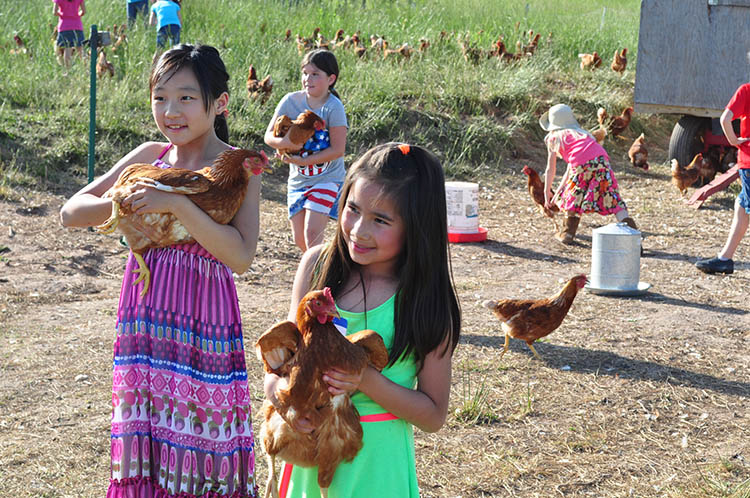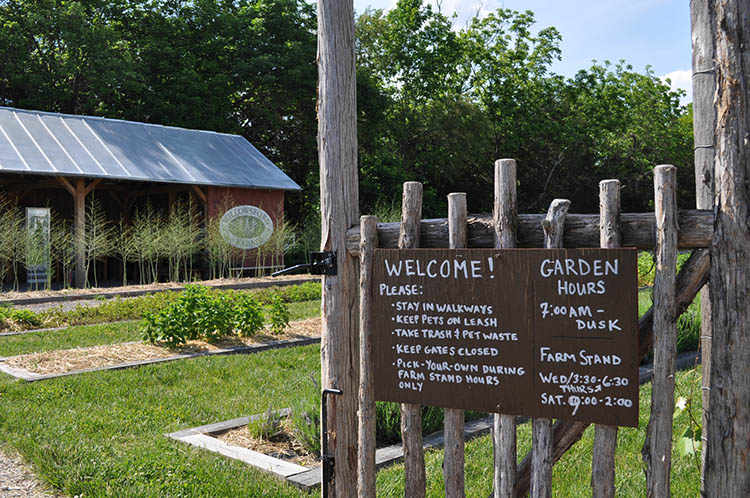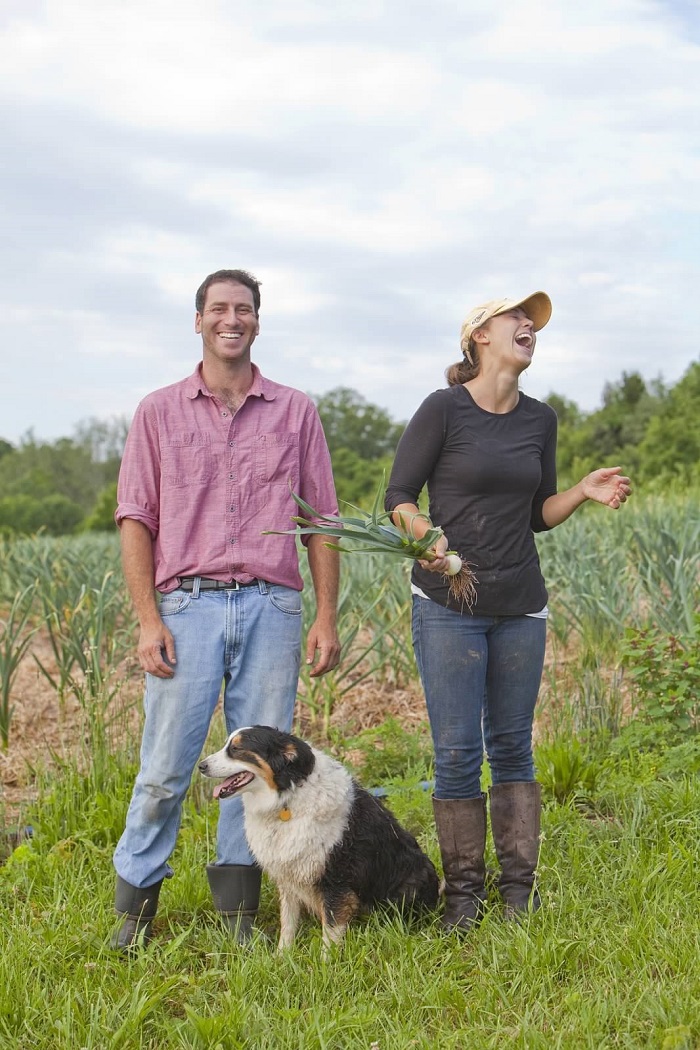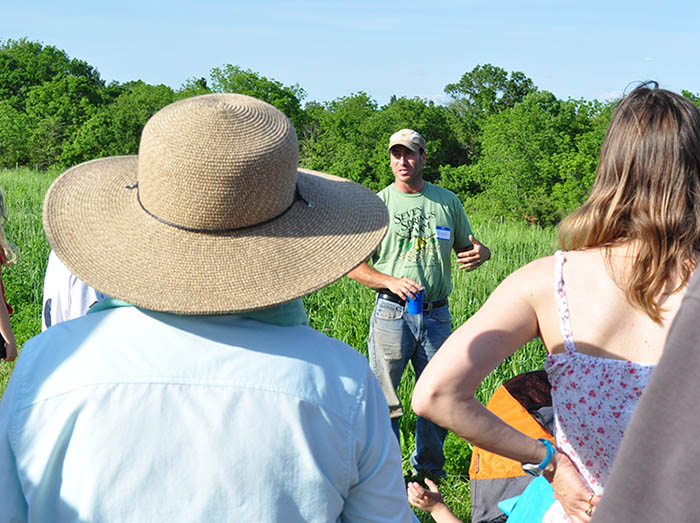Mike Snow’s future boss wasn’t quite sure what to ask when he first interviewed him for the position of “farmer” at a new housing development in Loudoun County.
It was the middle of winter and, while Snow came with references from previous farming positions, “it’s not like they come in with a resume of what they grow,” said Brian Cullen, who was piecing together a core team for what would become Willowsford, the first planned neighborhood of its size to set aside a portion of land for a working farm.
For his part, Cullen was operating in uncharted territory, too.
“You’re sizing each other up. And Mike was probably saying, ‘Are these guys just doing this as a marketing ploy?’” Cullen wondered. (Snow, 36, said later that the thought did cross his mind, but mostly he was thinking about how uncomfortable he was in dress shoes.)
A few farming seasons later, Snow says he couldn’t be happier with the arrangement that’s provided him both a place to farm and a steady salary. He now sees this type of development as a potential model for sustaining agriculture alongside new residences.
The thought of farming under an unconventional arrangement wasn’t new to Snow, whose most recent farming position had been at a nonprofit. He was running the Ecosystem Farm and farmer-training program at the Accokeek Foundation when Willowsford approached him, though they weren’t necessarily looking for an organic farmer.
But “they realized that farming that way would add more value to the community,” he said. “It’s my choice to farm this way. They didn’t say, ‘We need an organic farm.’”

Snow’s introduction to farming came while he was working on his geography degree at Middlebury College in Vermont. While in school, he worked on a mapping project with a farmer, and he also ended up taking a permaculture course.
“It seemed like I should know that stuff,” he said. “That’s where I first heard of kale.”
Snow took a part-time job at a vegetable farm while he finished his thesis and began to consider farming full-time.
Freedom to farm
At Willowsford, the developers decided early on against the type of neighborhood that has dotted much of Loudoun County, with one- to three-acre lots and a golf course. They chose instead to cluster the homes onto portions of the land, leaving about 2,000 acres to be conserved as natural landscapes and farmland.
Some of that land had been leased in the past to farmers, who used it for pasture or to grow crops like soybeans and corn.
“The question was, ‘How do you use it in some meaningful and purposeful way rather than let it go fallow?’” Cullen said.
The idea was soon born for a small-scale farm, one that would grow food for the development’s residents and others instead of feed for cattle. And they started looking for a farmer to manage it.
What we found is that a lot of the young farmers are lacking land and money — two important things — and we actually had the land and the money to start this.
Of the 300 acres now set aside for such agricultural uses, Snow grows produce and grazes chickens on about 30 of it while managing the rest with a larger future farm in mind.
From a marketing standpoint, Cullen said Willowsford saw in the farm an opportunity to appeal to potential residents who, increasingly, want to live in a place “where maybe kids can grow up knowing where food comes from.”
But, from a land-use perspective, Cullen saw the chance to support local farmers who want to sell directly to customers in the Washington metro area.

“What we found is that a lot of the young farmers are lacking land and money — two important things — and we actually had the land and the money to start this,” he said.
Snow said the partnership works well because Willowsford has given him the freedom to farm as he sees fit. More than that, the developer helped put the initial infrastructure in place — including barns, deer fencing and a greenhouse — and basically asked Snow to help determine a budget. (Cullen said Snow still insisted on buying used equipment as much as possible. “It’s not like a kid in a candy store.”)
While Willowsford pays the farmer’s salary for now, the farm will need to sustain itself financially by the time the development is complete. And, in exchange for all these resources, Snow also does more than just grow vegetables.
He appears in short videos that show customers of the farms’ CSA program what to do with the contents of a weekly farm box. He displays an incredible amount of patience while showing the neighborhood kids how to “help” move laying hens from one field to another after a potluck meal at the farm. And he explains to residents and customers alike (not all residents are CSA members) how he uses biology rather than chemistry to foster healthy soils and plants in a holistic way at the farm.
“I think for any farmer who is involved in direct marketing, you have to have some way of interacting with your people,” Snow said. “In that sense, it’s not for everybody.”
While Willowsford pays the farmer’s salary for now, the farm will need to sustain itself financially by the time the development is complete.
Snow said, despite his regular interaction with customers, he’s still very much “a grumpy farmer,” which is where Deb Dramby comes in. Dramby is the farm’s market and education coordinator and another young farmer whose position is supported, for now, by the development.
Dramby spends part of her time growing vegetables and keeping goats that help with problem vegetation on this and other properties. She also runs — with an effervescent smile — the farm’s market stand three days a week, along with regular events like volunteer weeding nights coordinated through the farm’s active Facebook page.
“Deb is really good at this stuff,” Snow said. “Rarely do you have a farm where it’s just one person doing everything. We want to be at the scale where we can support more than me.”
Salary vs. equity

Mike Snow and Deb Dramby
Photo by Molly M. Peterson
The farm has room to grow into the 300 acres that Snow currently is charged with managing in a sustainable manner, whether for wildlife, crops or livestock.
He said one of the reasons he thinks a salary is appropriate is that his and Dramby’s positions add value to the development beyond the farm.
He compares the other aspects of their positions to the side jobs that many farming families keep to subsidize their income in the early years. The salary also helps make up for the fact that he doesn’t have the chance to build equity on the farm like he would if he owned the land.
But Snow has a keen sense of ownership in the farm he helped build from a blank slate, a farm that also has grown a palpable sense of community in this burgeoning neighborhood. About 400 homes have been sold so far, and Cullen estimates construction could continue into 2019. This year, about half of the farm’s 150 CSA members are residents of Willowsford. Some residents stop by the market stand more frequently than others, while some don’t have any interest in heaps of local produce.
“It’s not like a bunch of hippie families who want to live on an organic farm. It’s mainstream people who move here for a lot of reasons,” Snow said.
He adds that, if the community wasn’t interested in supporting the farm and its produce, he would do what most other small-scale farms do, carting the products to the nearest willing customer at farmers markets closer to D.C.
“If the community wasn’t interested in supporting us, we’d find other customers,” Snow said, “because our mission is to manage land and do it viably.”

This story is part of “Finding a Place to Grow“, a publication produced by The Piedmont Environmental Council. The stories were written by Whitney Pipkin, a freelance journalist from Alexandria, VA who covers food, farms, and the environment. Her work appears in the Washington Post, Virginia Living and the Chesapeake Bay Journal, among others, and she writes at thinkabouteat.com. Photos for this story were taken by Whitney Pipkin.
The publication was made possible by a grant from The Beirne Carter Foundation.

